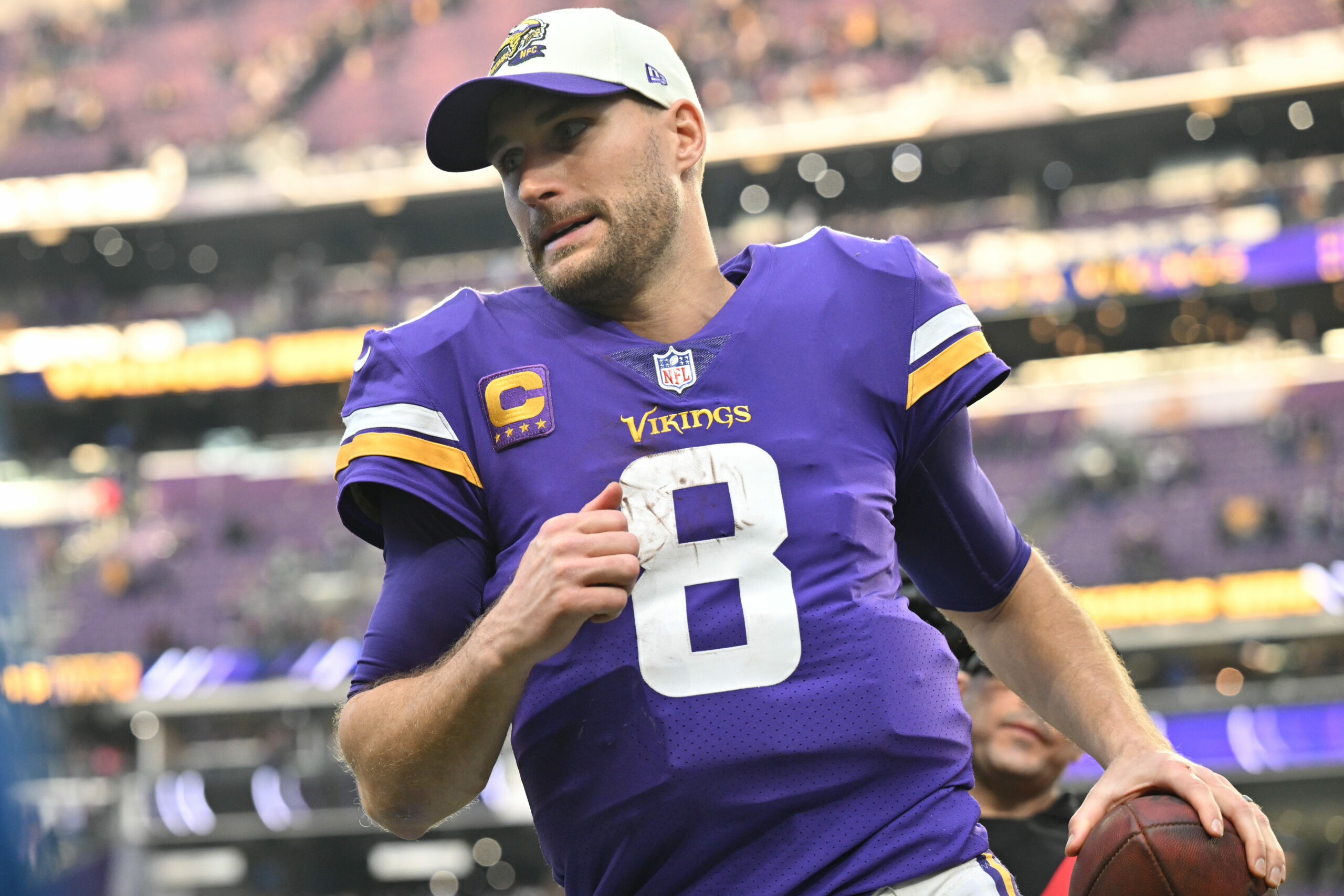The Minnesota Vikings need to find a quarterback of the future and they were linked on Wednesday morning by Mike Florio to San Francisco 49ers quarterback Trey Lance. They had spoken about a trade potentially involving both Lance and Kirk Cousins at the combine and it made a lot of sense then.
Does it make the same amount of sense now? Not quite.
Since they had those conversations at the combine, the Vikings have restructured the contract of Cousins to free up $16 million of cap space. That in itself makes trading Cousins a difficult task.
How does it become difficult? Accelerated bonus money. Let me explain.
When you give a player a signing bonus, that money gets spread out up to five years. That gives you the ability to ease the cap hit for that season while also getting the player cash up front. It’s a very common practice by teams. That also can complicate moving on from a player.
Kirk Cousins this year was set to have a cap hit of $36.25 million before the restructuring. It was setup with these parameters.
- $10 million base salary
- $20 million roster bonus
- $6.25 in pro-rated signing bonus
A roster bonus is different from a signing bonus. It’s a different way to structure base salary. It vests on a certain day (usually within five days of the new league year beginning) and is structured to give front offices flexibility to do something like a restructure. A roster bonus is counted on the salary cap the same season in which it is paid and it’s really easy to convert into a signing bonus.
Cousins also had two void years on the deal each with $6.25 million in pro-rated signing bonus. The restructure has the contract looking quite different. Over The Cap has the numbers broken down with detail.

Moving on from Cousins with a trade prior to June 1st would accelerate all of the prorated bonus money onto the 2023 salary cap as seen below. The total cap hit for Cousins would increase by $18.5 million in 2023 to $38.75 million.

If they end up trading Cousins after June 1st, Cousins’ cap hit won’t end up accelerating into 2023, but the cap hit for 2024 would be the anticipated $28.5 million. They would save $10 million on the cap with a trade, as the new team would be responsible for his $10 million in guaranteed salary.
With all that said, a trade isn’t impossible. If the Vikings end up trading both Za’Darius Smith and Dalvin Cook during the NFL draft, that would clear enough cap space to make it happen.
We can argue the merits of whether that’s a good idea or not, but there is a path if the Vikings want to pursue it. It just happens to be a difficult one.
